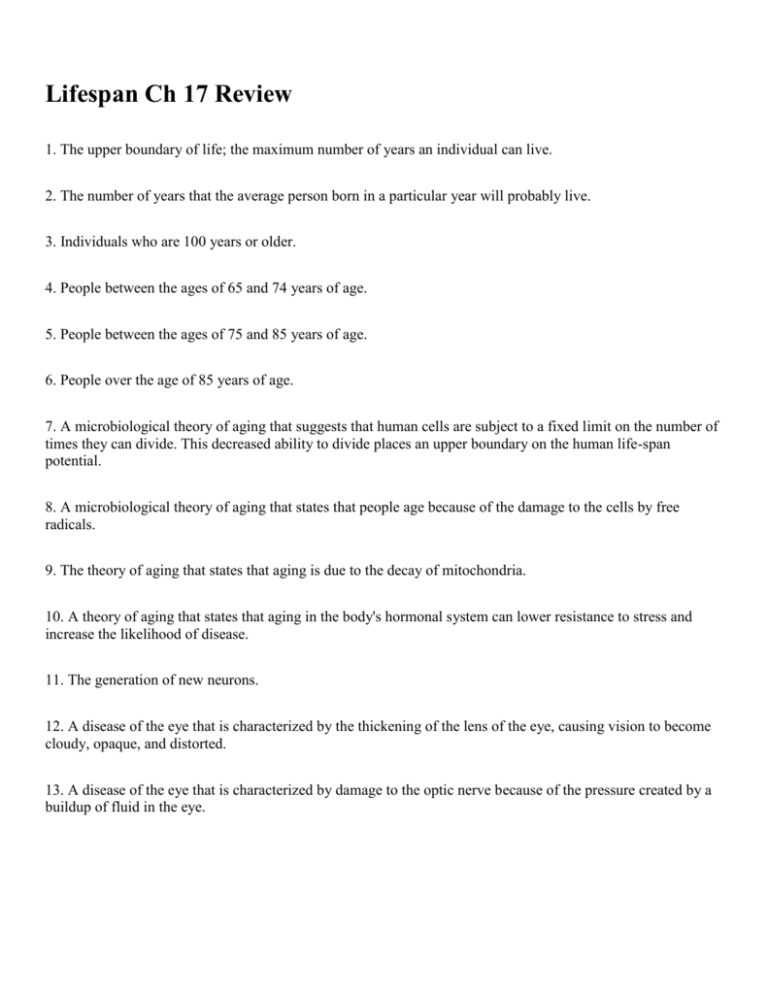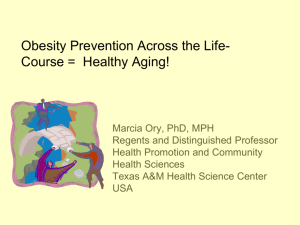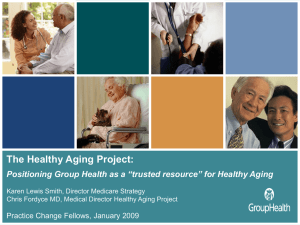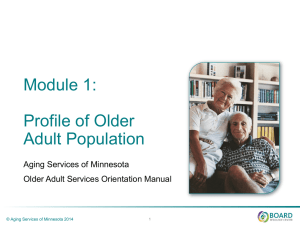Lifespan Ch 17 Review
advertisement

Lifespan Ch 17 Review 1. The upper boundary of life; the maximum number of years an individual can live. 2. The number of years that the average person born in a particular year will probably live. 3. Individuals who are 100 years or older. 4. People between the ages of 65 and 74 years of age. 5. People between the ages of 75 and 85 years of age. 6. People over the age of 85 years of age. 7. A microbiological theory of aging that suggests that human cells are subject to a fixed limit on the number of times they can divide. This decreased ability to divide places an upper boundary on the human life-span potential. 8. A microbiological theory of aging that states that people age because of the damage to the cells by free radicals. 9. The theory of aging that states that aging is due to the decay of mitochondria. 10. A theory of aging that states that aging in the body's hormonal system can lower resistance to stress and increase the likelihood of disease. 11. The generation of new neurons. 12. A disease of the eye that is characterized by the thickening of the lens of the eye, causing vision to become cloudy, opaque, and distorted. 13. A disease of the eye that is characterized by damage to the optic nerve because of the pressure created by a buildup of fluid in the eye. 14. A disease of the eye that is characterized by the deterioration of the macula of the retina which corresponds to the focal center of the visual field. 15. The primary receptor for hearing in the inner ear which degenerates with age. 16. An inflammation of the joints that is accompanied by pain, stiffness, and movement problems. 17. A chronic condition that involves an extensive loss of bone tissue often causing older adults to walk with a marked stoop. 18. A group of vitamins that may be able to help slow the aging process and improve the health of older adults. 19. List two biological factors that may account for the finding that women live longer than do men. 20. List three ways in which the oldest-old differ from the young-old. 21. List three ways the brain can adapt as it ages. 22. List four ways in which physical appearance changes in late adulthood. 23. List four leading causes of death in older adults. 24. List five benefits of exercise for the aging. 25. What is the difference between life span and life expectancy? 26. Discuss the cellular clock theory of aging. 27. Discuss the free-radical theory of aging. 28. Discuss the hormonal stress theory of aging. 29. Define chronic disorders, and list three of the four chronic conditions associated with the greatest limitation of work.




